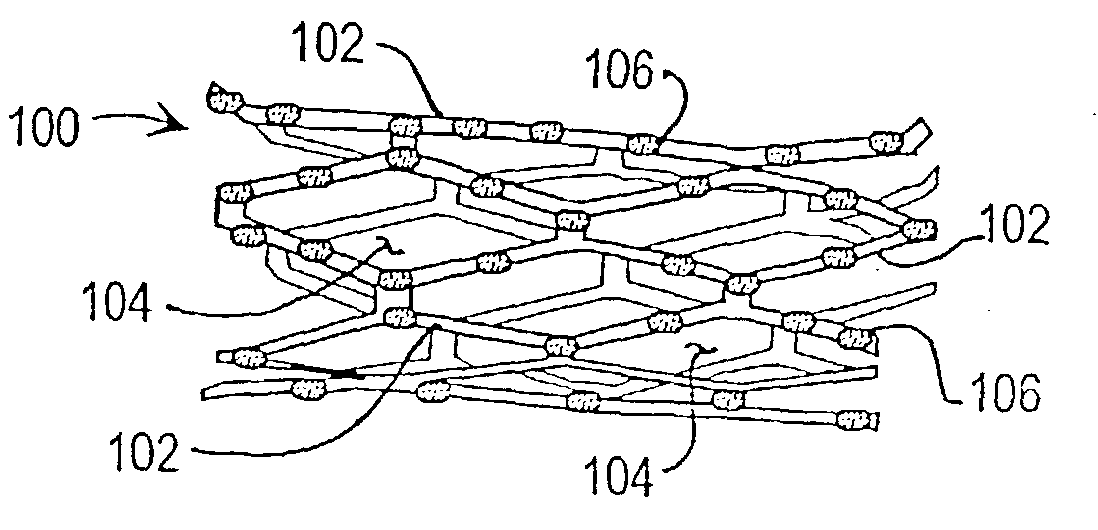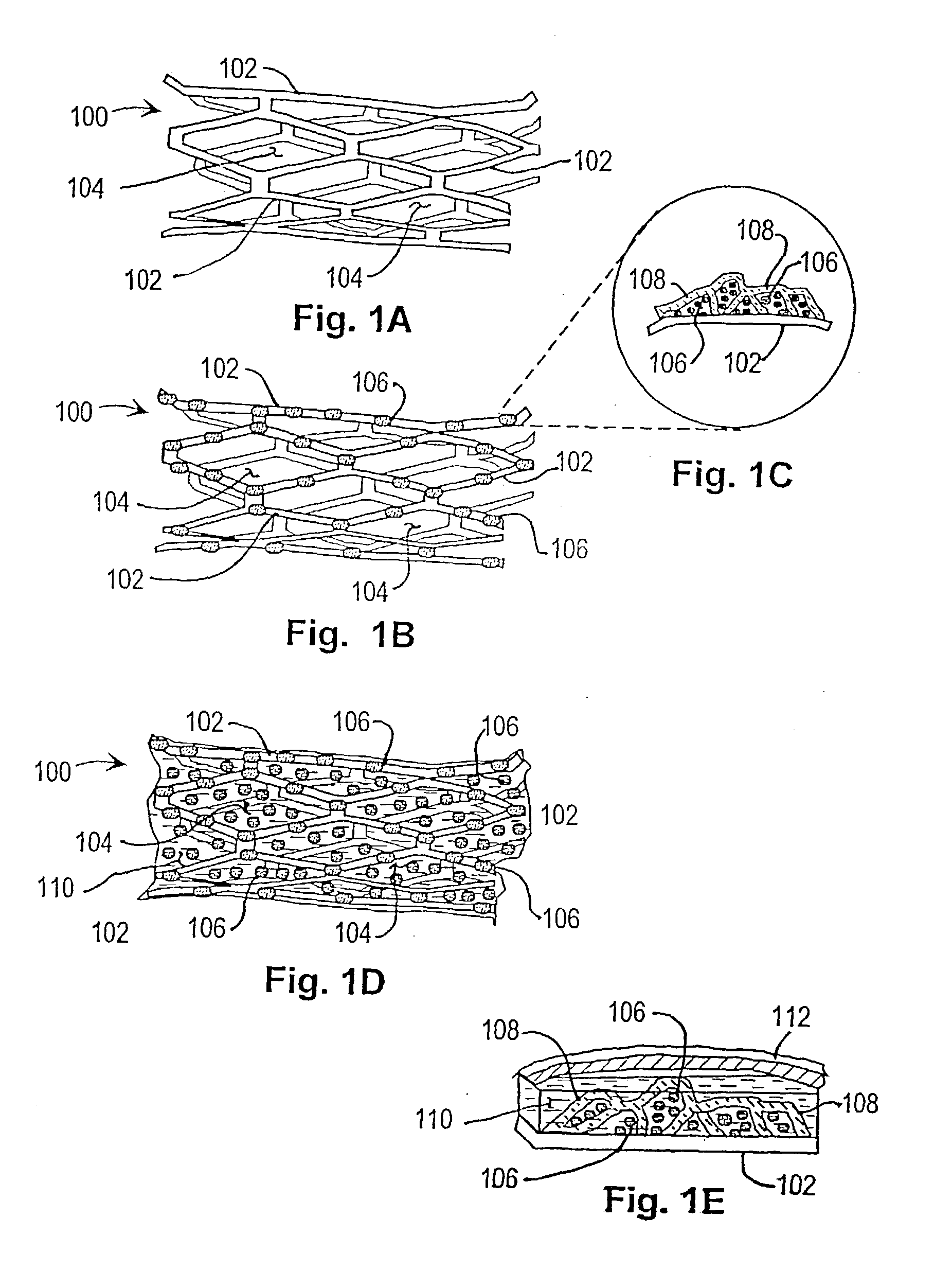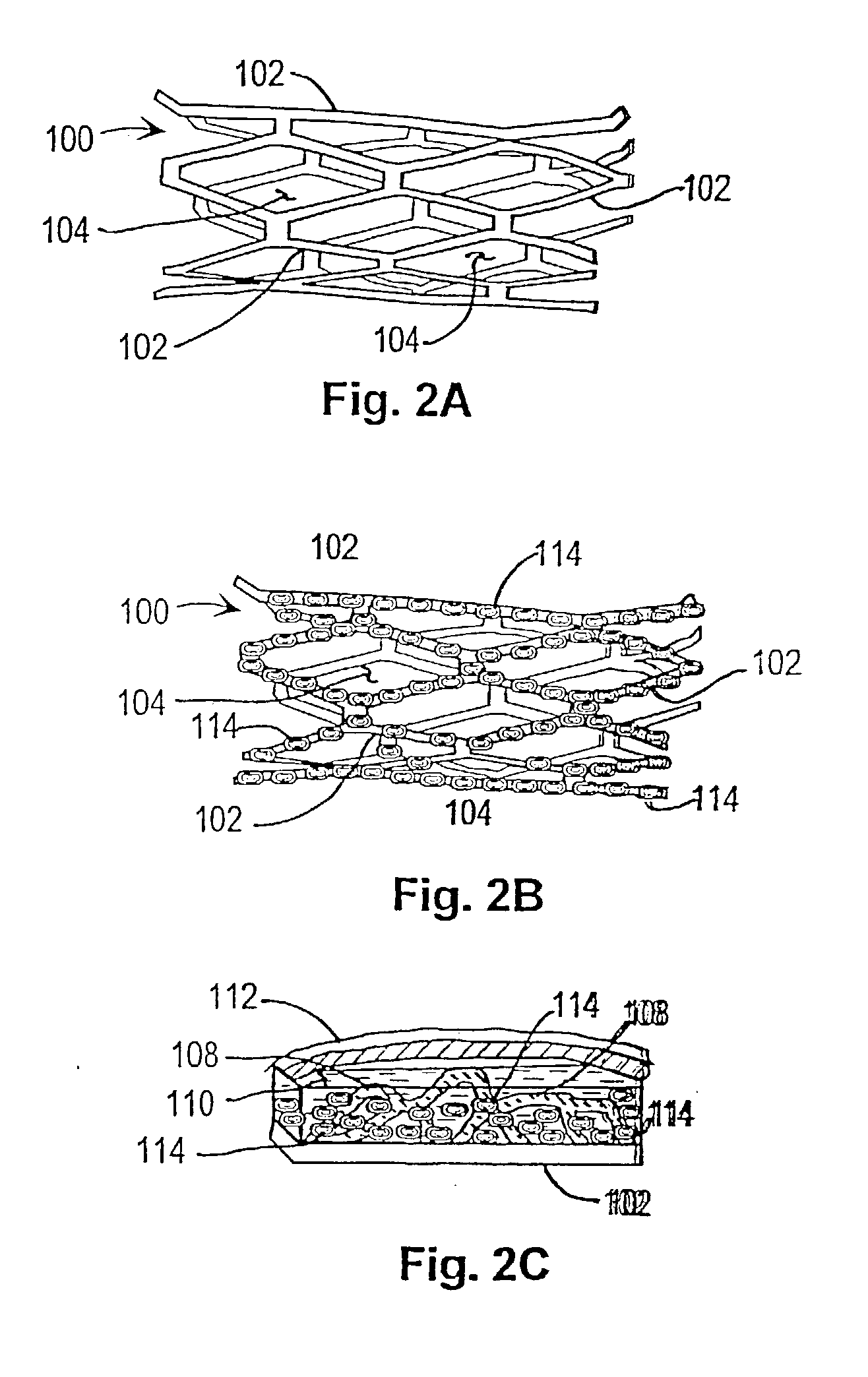Inhibition of restenosis using a DNA-coated stent
a dna-coated stent and restraint technology, applied in the direction of prosthesis, blood vessels, genetic material ingredients, etc., can solve the problems of gradual narrowing of the vessel lumen, high chance of restnosis recurrence, and the possibility of recurrence very high
- Summary
- Abstract
- Description
- Claims
- Application Information
AI Technical Summary
Benefits of technology
Problems solved by technology
Method used
Image
Examples
first embodiment
[0039] In a first embodiment or strategy of the invention, plasmid DNA or viral vector is incorporated into a stent coating, which comprises a substance that adheres to the stent and incorporates the DNA or viral vector, or transformed cells, without damaging them. Thereby the coating facilitates DNA delivery to, and transfection of, cells within the injured vessel wall, or cells that are migrating from the media and / or adventitia to form the neointima. The genes within the stent coating will encode gene products with anti-restenosis activities. The coating can be formed from any material that can cover the surface of the stent and that has the above characteristics. One such candidate coating has been created by the Photolink.RTM. process of the SurModics company (Eden Prairie, Minn.).
[0040] Within the first embodiment or strategy of the invention, two alternatives may be used:
[0041] 1. DNA is incorporated in the stent coating, covering stent struts but not intervening spaces.
[0042...
second embodiment
[0055] In a second embodiment or therapeutic strategy of the invention, progenitor endothelial cells transduced with therapeutic transgenes are incorporated into a stent coating. The coating comprises a substance that adheres to the stent and incorporates the cells without damaging them. The implanted endothelial cells will have been transfected (or infected) ex vivo, with vectors containing transgenes encoding gene products with anti-restenosis activities. This anatomic platform facilitates exposure of cells within the injured vessel wall (or cells that are migrating from the media and / or adventitia to form the neointima) to the therapeutic gene product expressed by the endothelial cells.
[0056] As with the first invention strategy or embodiment, this variant of the invention can employ any coating that can be attached to a stent and that has the above characteristics. One such candidate coating has been created by the Photolink.RTM. process of the SurModics Company (Eden Prairie, M...
PUM
| Property | Measurement | Unit |
|---|---|---|
| time | aaaaa | aaaaa |
| mass | aaaaa | aaaaa |
| resistance | aaaaa | aaaaa |
Abstract
Description
Claims
Application Information
 Login to View More
Login to View More - R&D
- Intellectual Property
- Life Sciences
- Materials
- Tech Scout
- Unparalleled Data Quality
- Higher Quality Content
- 60% Fewer Hallucinations
Browse by: Latest US Patents, China's latest patents, Technical Efficacy Thesaurus, Application Domain, Technology Topic, Popular Technical Reports.
© 2025 PatSnap. All rights reserved.Legal|Privacy policy|Modern Slavery Act Transparency Statement|Sitemap|About US| Contact US: help@patsnap.com



